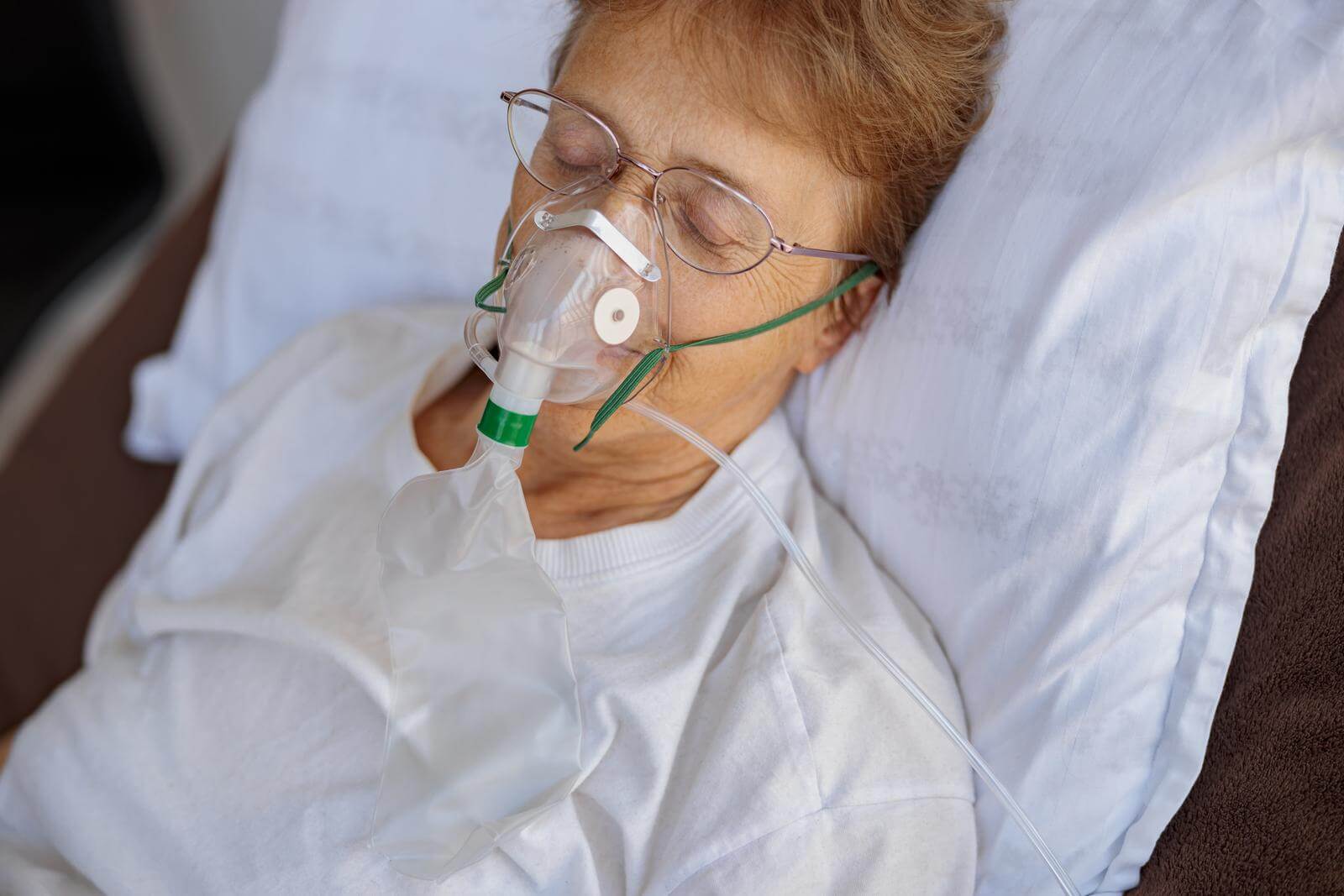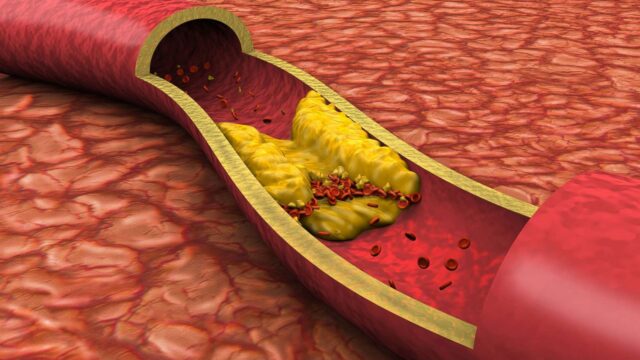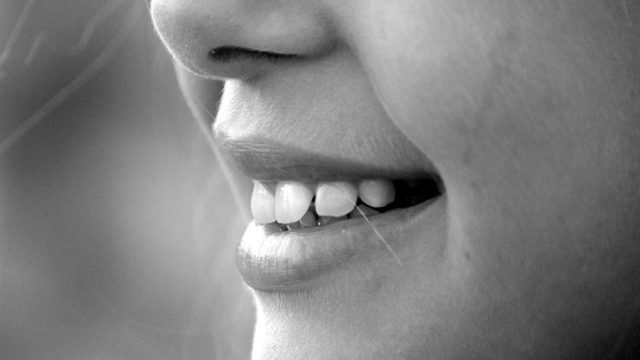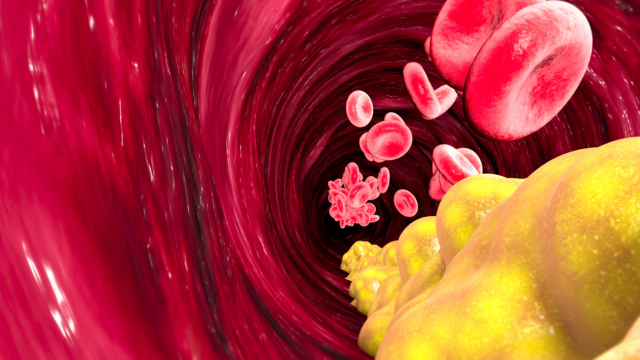FTC disclaimer: This post may contains affiliate links and we will be compensated if you click on a link and make a purchase.
COPD stands for chronic obstructive pulmonary disease. It’s a condition where your lungs become inflamed because of smoking or breathing in polluted air.
This causes shortness of breath, coughing, wheezing, chest tightness, and pneumonia.
COPD symptoms include cough, wheezing, shortness of breath, and chest tightness. But these symptoms aren’t always present.
Many people with COPD go undiagnosed until they experience complications such as emphysema, lung cancer, heart failure, and pneumonia.
If you suspect you may have COPD, then read on to learn how to diagnose COPD, understand its symptoms, and find treatment options that will help you live a healthier life.
What is COPD or Chronic Obstructive Pulmonary Disease?

COPD, or chronic obstructive pulmonary disease, is a progressive lung disease that affects over sixteen million Americans, or eleven percent of the nation’s population.
COPD is the fourth leading cause of death in the United States, with approximately 120,000 COPD deaths reported annually.
Chronic obstructive pulmonary disease usually occurs after the age of forty and is mainly found among smokers or former smokers. COPD is especially prevalent in long-term cigarette smokers.
As COPD progresses, the lungs’ airways become less elastic, and excess mucus accumulates.
The lungs can inhale air, but the airways collapse when air is expelled, trapping stale, or “dead,” air in the lungs. As COPD progresses, lung function gradually deteriorates, making breathing difficult.
Lung Disease and Chronic Obstructive Pulmonary Disease
COPD is the end stage of other forms of lung disease. Of these diseases, chronic bronchitis and emphysema are the most common causes of COPD.
Either lung disease can cause chronic obstructive pulmonary disease, but most COPD patients suffer from both types of lung disease.
These two different types of lung disease impair lung capacity in different ways. Emphysema destroys lung tissue, while chronic bronchitis is characterized by excessive mucus production and lung tissue scarring.
COPD and Asthma
Asthma and chronic obstructive pulmonary disease have similar symptoms and characteristics. Like COPD, asthma is an obstructive lung disease, and the two can be difficult to distinguish.
COPD and Asthma are both chronic respiratory diseases that can make breathing difficult. However, there are some key differences between the two conditions.
COPD, or chronic obstructive pulmonary disease, is a progressive disease that makes it hard to breathe. It is often caused by smoking and a narrowing of the airways.
On the other hand, asthma is a chronic inflammatory disease that causes the airways to narrow and swell. Asthma can be triggered by allergies, exercise, or even stress.
While both COPD and asthma can be serious, asthma is more likely to be fatal. Asthma is one of the leading causes of death in children under 18.
COPD is more common in adults over 40, while asthma is more common in children and young adults. However, both conditions can occur at any age.
There is no cure for either COPD or asthma, but there are treatments that can help manage the symptoms and improve quality of life. If you think you may have either condition, it’s important to see a doctor for a diagnosis.
Causes, Risk Factors, and Symptoms of COPD

As chronic obstructive pulmonary disease degrades lung function, many symptoms may develop.
Dyspnea, or shortness of breath, worsens as the disease progresses. A persistent wet cough develops, moving large amounts of sputum. In some cases, COPD is accompanied by wheezing.
COPD symptoms can vary
COPD symptoms may vary depending on the progression of the disease.
Shortness of breath
One of the first COPD symptoms is noticeable shortness of breath. The person may notice this more when they are doing some sort of strenuous exercise.
The COPD symptom of not being able to take a deep breath is quite common and can cause anxiety attacks, making the situation worse.
Coughing
Another of the many COPD symptoms may include coughing. This type of cough generally continues for an extended time until the person sounds as if they are choking.
It often produces a large amount of mucus. This COPD symptom cannot be eased with an over-the-counter cough medication.
Rattling and wheezing sound
COPD symptoms can include a rattling sound when the person breathes or various wheezing sounds.
Because this can be a symptom of many other illnesses, such as a simple bad cold or allergy, it is often overlooked by the patient or doctor.
Wheezing is caused by the flow of air into and out of the lungs declining.
Tightness in the chest
A feeling of tightness in the chest is another one of the many COPD symptoms that can occur. A physician should always check out this symptom since it can indicate other serious ailments such as heart disease.
COPD symptoms in the latter stages
In the latter stages of the disease, COPD symptoms may increase. There may be an increased heart rate.
Shortness of breath may become severe even when the person is at rest. COPD symptoms in the latter stages may also include blue coloring of the lips or fingers and toenails.
This is caused by a lack of oxygen in the blood. The patient may become confused or not be mentally alert due to a lack of oxygen.
Weaker immune system
Suffering from the symptoms of COPD may cause the immune system to be weaker, allowing the person to catch more colds or have more bouts of other illnesses.
There are many treatments available for COPD symptoms. Stopping smoking will not prevent COPD, but it will increase your chances of getting better and more effective treatment.
COPD Risk Factors and Causes
COPD is a preventable and treatable disease characterized by progressive airflow obstruction.
Many risk factors and causes for COPD include smoking, secondhand smoke, occupational dust and chemicals, and indoor and outdoor air pollution.
Cigarette smoking
Cigarette smoking is the leading cause of COPD, accounting for 80-90% of all cases. Cigarette smoke contains more than 4,000 chemicals that can damage the lungs and lead to inflammation and cell death.
Smokers are not the only ones at risk for developing COPD – exposure to secondhand smoke can also increase your risk.
Cigarette smoking irritates the airways, and mucus production increases in response to cigarette smoke. Cigarette smoking also damages the cilia, the hair-like structures that remove debris from the lungs.
Long-term smokers have difficulty breathing and are more prone to lung disease. Smokers may experience chest tightness as a symptom of cigarette-caused lung damage.
Exposure to environmental or toxic pollutants
Exposure to environmental or toxic pollutants may also cause chronic obstructive pulmonary disease.
Occupational exposures – such as exposure to dust, gases, fumes, or chemicals – can also contribute to the development of COPD.
Indoor and outdoor air pollution can also play a role in the development of COPD.
However, the number of COPD cases attributed to external pollutants is small compared to cases caused by cigarette smoking.
Alpha-1 antitrypsin deficiency
COPD may also be caused by a genetic condition: alpha-1 antitrypsin deficiency. This condition is commonly associated with emphysema.
Alpha-1 antitrypsin is a glycoprotein found in body fluids that fights inflammation. Deficient levels damage the alveoli (the air sacs in the lungs).
The Differences Between COPD and Asthma Symptoms
It’s difficult to distinguish between COPD and asthma symptoms. Both conditions obstruct the airways and interfere with breathing.
Asthma symptoms can also contribute to COPD, although COPD is usually caused by a combination of chronic bronchitis and emphysema.
The distinction between asthma symptoms and COPD is important, as treatment options differ for each disease.
Generally speaking, asthma symptoms are more variable than COPD symptoms, coming and going as the individual is exposed to asthma triggers. COPD symptoms tend to be more consistent.
COPD vs. Asthma Symptoms
Age: Asthma symptoms can develop at any age and often as early as childhood. In comparison, COPD symptoms are rarely apparent before age forty.
Nasal symptoms: Although both asthma and COPD affect the respiratory passages, COPD rarely presents with nasal symptoms. Sniffling, nasal discharge, and irritated nasal passages are all common asthma symptoms.
Smoking: Eighty percent of COPD cases are linked to smoking. While asthma symptoms can be linked to smoking in some people, many nonsmokers are also asthmatic.
Triggers: Asthma symptoms often have a specific trigger. Possible Asthma triggers include colds, specific allergens, environmental pollutants, and stress.
Removing the trigger often improves asthma symptoms. While quitting smoking slows the rate of COPD lung deterioration, removing other triggers does not affect symptoms.
Wheezing: Asthma sufferers often wheeze as they breathe. COPD caused by chronic bronchitis may also cause wheezing, but lung sounds are difficult to detect in emphysema.
Reversible Asthma and Asthmatic COPD
Treatment results differ significantly between asthma and COPD. Many forms of asthma are considered reversible: symptoms can be controlled with adequate treatment.
COPD treatments focus on reducing symptoms and slowing the progression of the disease.
In cases where asthma cannot be fully reversed, the condition may be called asthmatic COPD.
COPD and asthma can coexist, with each disease aggravating the others’ symptoms. Combinations of COPD and asthma are especially common in asthmatics who smoke.
Diagnosis of COPD: Spirometry and other tools

Diagnosis of COPD is complicated, as the underlying lung disease or diseases must also be identified.
A COPD diagnosis will include a physical exam, spirometry tests to gauge breathing capacity, chest x-rays, and possibly blood gas readings.
Personal History and Physical Exams
Initially, your doctor will want to give you a physical exam and ask for your personal medical history, including any history of smoking. Symptoms such as chronic coughing or difficulty breathing will be noted.
During the physical exam, the doctor will listen to your breathing with a stethoscope to check for signs of lung disease.
Chronic bronchitis may be the root of the symptoms if the physical exam detects wheezing noises. Signs of emphysema during a physical exam include low levels of lung noise while breathing.
Spirometry and Lung Disease
If the physical exam suggests the need for further testing, a spirometry test will be ordered.
Spirometry measures a person’s breathing capacity and lung function. Spirometry results allow doctors to determine lung capacity and how fast air is expelled while breathing. Different types of lung disease produce different spirometry results.
Spirometry is a simple procedure. You breathe into a tube that is connected to a spirometry machine. The machine gathers information while you are breathing into the tube.
PEFR: Peak Expiratory Flow Rate
A PEFR (peak expiratory flow rate) test is similar to a spirometry test. During a PEFR test, you breathe into a hand-held meter, expelling air from the lungs as quickly as possible.
The test results indicate if airways are obstructed and how difficult breathing is.
A PEFR test is often given before and after medication, allowing the doctor to gauge how the medication affects breathing.
Blood Gas Readings
If symptoms are severe, blood gas readings may be ordered. Blood gas readings measure the levels of oxygen and carbon dioxide in the blood.
If oxygen levels are abnormally low, breathing through an oxygen mask may be part of your COPD treatment.
Chest X-Rays
Chest x-rays may be ordered as part of a physical exam. An x-ray may indicate other forms of lung disease, such as pneumonia or lung cancer.
Complication of COPD

Health complications can develop as COPD damages the lungs and impair breathing ability.
Some, such as respiratory distress and an increased risk of lung infection, are complications most people would expect from lung disease.
Others, such as heart disease and sleep disorders, are health concerns that, at first glance, seem to have little to do with the lungs.
Respiratory Insufficiency
Respiratory insufficiency is perhaps the most obvious health complication associated with COPD.
As breathing becomes increasingly difficult, the body loses the ability to balance the amount of oxygen and carbon dioxide in the blood.
Other health concerns, such as heart disease, can occur if too little oxygen is available in the blood. Respiratory insufficiency may require permanently breathing through an oxygen mask.
Heart Disease
As the lungs’ ability to transport oxygen drops, COPD places increasing strain on the heart.
Heart disease may occur if low oxygen levels develop in the blood. High blood pressure develops in the blood vessels between the heart and the lungs due to these low oxygen levels, making the heart work harder to pump blood. The strain ultimately leads to heart disease and heart attacks.
Sleep Disorders
COPD sufferers experience more sleep-related health problems than the average person. Sleep disorders, such as insomnia, nightmares, and chronic fatigue, may develop.
Why COPD causes sleep disorders is unclear. Several possible reasons have been suggested, including the possibility that breathing difficulties and decreased lung function disrupt sleep.
Side effects of COPD medications may also be to blame for some sleep disorders.
Lung Cancer
Lung cancer is not a COPD health complication. However, most COPD patients are long-term smokers, so they are at higher risk of lung cancer.
Pneumonia and Infections
COPD greatly strains the lungs, increasing the possibility of infections and pneumonia.
Infections of the lungs are a serious health risk for COPD patients and should receive immediate medical attention.
Pneumothorax
Pneumothorax is a health condition that can occur due to COPD. A hole develops in the lung sac of one of the lungs, and air escapes into the area between the chest wall and the lungs.
This causes the collapse of the affected lung and causes respiratory distress. Emergency medical treatment is required.
Polycythemia
Polycythemia is an imbalance in blood cells caused by low oxygen levels in the bloodstream. As the lung’s ability to acquire oxygen lowers, the body produces more oxygen-carrying red blood cells to use the available oxygen better.
While this helps initially, excess red blood cells eventually clog small blood vessels.
COPD Stages
- Stage 1: Lungs function at 50 percent of normal capacity or higher. Health is not greatly impaired.
- Stage 2: Lungs function at 35 to 49 percent normal capacity. Health is significantly impacted.
- Stage 3: Lungs function at less than 35 percent. Health is severely affected.
Treatment of COPD (Aims to slow the progression of the Disease)

COPD cannot be cured, but treatment strategies can reduce symptoms and slow the progression of the disease. COPD treatment may include medication, breathing exercises, and even lung transplant surgery.
Quit Smoking
Quit smoking. That is perhaps the single most effective treatment available to most COPD patients. If you can quit smoking, you can slow the progression of COPD and, by doing so, increase your lifespan.
Of course, recommending quitting smoking is much easier than quitting. You may need the support of friends and family to quit smoking.
Many people find medical approaches, such as nicotine replacement therapy, to help them quit. When you do decide to quit smoking, consider these tips:
- Decide on when you’ll have your last cigarette. Tell friends and family when you’re going to quit.
- Avoid any smoking environments.
- Don’t allow yourself any access to cigarettes or tobacco products.
Physical Therapy and Breathing Exercises
Breathing exercises help people with COPD learn how to get the most air into their lungs, maximizing the amount of oxygen available.
Pursed-lip breathing exercises, for instance, call for people to breathe in through their nose and then to breathe slowly out through the mouth with the lips pursed, which helps empty the lungs.
Diaphragmatic breathing exercises teach how to breathe from the diaphragm, a breathing technique that fills the lungs effectively and helps move stale air out of the lungs.
Low oxygen levels impair muscle strength. People with COPD are often quickly drained by physical activity. Strength and endurance therapy, especially for the arms, can help people stay active.
Oxygen Supplementation
Oxygen supplementation is needed if oxygen blood levels fall too low. People in this situation may find relief by breathing oxygen through a face mask.
COPD caused by chronic bronchitis is more likely to require oxygen masks than emphysema-caused COPD.
Lung Transplant and Bullectomy
A lung transplant may treat severe COPD. A lung transplant will restore breathing levels and drastically reduce symptoms.
Unfortunately, there is a much greater demand for lung transplants than available donors.
As a result, doctors will only consider lung transplants for patients committed to quitting smoking and avoiding other conditions that cause COPD.
COPD-affected lungs often have large pockets of stale air that cannot be expelled from the lungs.
A bullectomy removes these air pockets, reducing the size of the lung. This makes it easier to exhale while breathing.
Preventing Infections
COPD leaves people susceptible to lung infections and pneumonia. Annual flu shots and vaccinations can lower the risk of pneumonia.
The new oral vaccine available for non-typeable Haemophilus Influenzae (NTHi) should also be considered by people living with COPD.
Steroids and New Treatments
Inhaled steroids are used to treat asthma. The medical community has long been divided on whether steroids can also help alleviate COPD symptoms or not.
New clinical evidence has proven that steroids are a valid treatment for COPD, but maybe only in a minority of patients.
Clinical trials now hope to determine which steroids work best, in which patients, and at what doses.
Other research has shown that resveratrol, a chemical found in red wine, may help reduce lung inflammation caused by COPD.
COPD Medication
- Antibiotics to fight infections
- Beta2-agonists to help open airways
- Bronchodilators to open airways and prevent bronchial spasms
- Expectorants to loosen mucus
- Diuretics to control water retention associated with COPD-caused heart disease.
Outlook
COPD is a serious lung condition that should not be taken lightly. Symptoms include shortness of breath, coughing, and difficulty breathing.
See your doctor for a diagnosis if you think you may have COPD. There is no cure for COPD, but treatment can help manage the symptoms and slow the progression of the disease.








